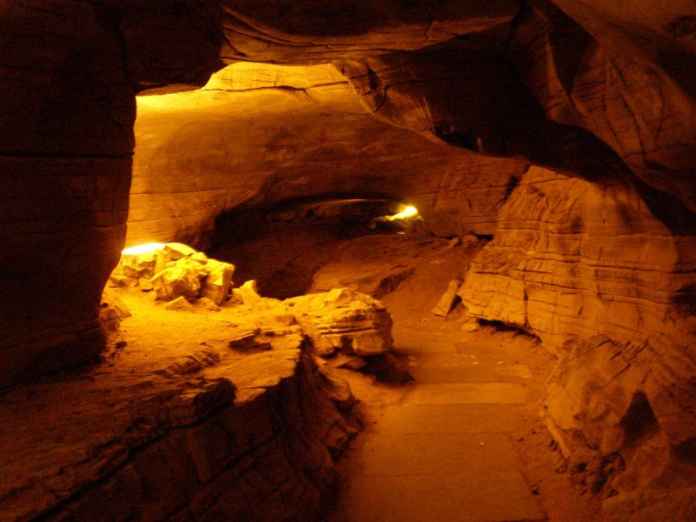Belum Caves, known for its stalagmite and stalactite formation, are the second largest tourist caves in the Indian sub-continent with a length of about 3229 meters. These caves are located in the Belum village in Kolimigundla Mandal of the Kurnool district in the state of Andhra Pradesh. The caves are about 3kms from Kolimigundla and 8kms from Petnikota village.
They get its name from the Sanskrit word Belum, which means caves. The Caves have large chambers, stretched passages and fresh water taps and galleries. This is because, Belum Caves are natural underground caves which are formed by constant flow of fresh underground water. The deepest point of the Caves is 120 feet from the entry level. This point is known as Patalganga.

Even though the Caves were acknowledged by the locals, but they were first mentioned in the year of 1884 in an expedition report conducted by Mr. Robert Bruce Foote. After this report, for centuries the Caves went unnoticed. Until, in the year of 1982, a German team headed by Mr. Herbert Daniel Gebauer along with a few locals, conducted a detailed exploration of the Caves.
Millions of years ago, erosion of the limestone deposit in the area near Chitravati River led to the formation of the Belum Caves. This Cave was formed due to the action of carbonic acid, which is the reaction between water and limestone.These maze like underground caves were formed because of Chitravati River being there for a long period of time. At present, Chitravati River flows about 3kms south of Belum. The Caves have 3 well like openings in the agricultural fields, with the middle one being the main entrance into the Caves.

Belum caves are historically as well geologically significant. Here you can see signs that indicate that centuries ago, Buddhist and Jain monks had occupied these Caves. Ruins of many Buddhists were found inside the Caves. At the moment, these ruins are placed in the Museum at Anantapur. The ASI (archaeological survey of India), also found remains of vessels and other things which were linked to the pre- Buddhist era. The remains can be dated back to 4500 BC.
The ticket for entering the Caves are Rs.50 and Rs.300 for locals and foreign tourists respectively. Earlier the entrance used to be smaller than what it is now. There have been many improvements done to the Caves. There are electronic gates and staircases installed to make the Caves more accessible.

There are many sections to the Belum Caves which are a must visit. First you have the Simhadwaram also called the Lion gate. This is a natural architecture which looks like the head of a lion. Then you have the Mandapam. It is a huge area with wonderful structures on its sides, making it look like a hall with pillars. Other beautiful sections are, Patalaganga, Kotilingalu, Thousand Hoods, Saptasvarala Guha, Banyan Tree Hall and many more.
Belum Caves are historically and architecturally rich place one must visit. You must come and see this nature’s gift to the world.













